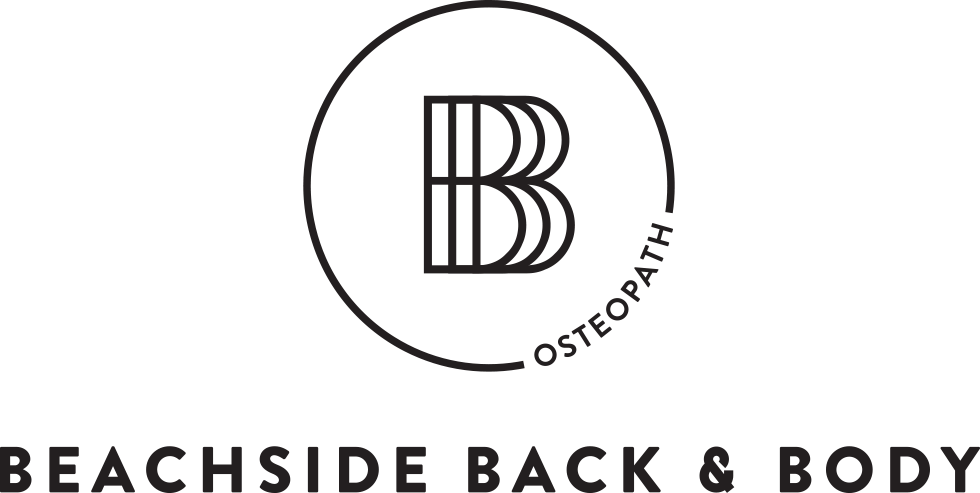Degeneration, wear and tear, disc bulges/irritations/herniations, joint sprains, arthritis, chronic pain...etc. What does it all mean?
As Osteopaths, a large portion of the patients we treat have low back pain. As you will begin to understand as you read on, many of these patients' pain is based on management and not a “cure”, others may be acute injuries that resolve. Patients often ask if their pain is ‘normal’. Research is predominantly showing that pain is not ‘normal’, though it is common. To show just how common it is, back pain affects between 60% and 80% of people throughout their lifetime. (Physiopedia). (1)
Lower back pain is defined as pain in the tissues inclusive of, and surrounding the lumbar spine (the lower 5 vertebrae of the spine before the pelvis begins). This pain can present in many different ways and areas of the back: it can present as a sharp or dull pain, hot and burning, tingling and everything in between. The pain can be localised, it can spread, radiate or refer. The quality, location and pain experience patients suffer with is dependent on the specific tissue (or tissues) that is injured/irritated (2, 3).
Research suggests that lower back degenerative conditions are common. For example: if a group of people that are 50-59 years of age and suffer no lower back pain were to undergo diagnostic imaging, we would find up to approximately 80% of them would have some form of a lower back degenerative back condition. (4). Furthermore, for a group of people within 20-29 years of age with no lower back pain to undergo the same diagnostic imaging, up to 37% of them will have some form of a lower back degenerative back condition. (4).
Factors that can be associated with low back pain include: age, gender, weight, occupation, hobbies, posture, physical activity and inactivity, diet, poor hamstring flexibility and lack of glute muscle group activation.
Can an Osteopath help my low back pain?
In your consultation with your Osteopath we will use orthopaedic testing to identify what the source of pain is and what tissues are involved. We will then discuss your diagnosis, explaining what may have led to this pain and what this pain may mean for you moving forward.
From there, provided it is safe to do so, we will perform manual therapy techniques on the tissues involved and those surrounding. Techniques such as: soft tissue massage, joint articulation, proprioceptive neuromuscular facilitation stretching and in some cases myofascial dry needling.
If we find it relative and beneficial to your case we can prescribe exercises or an exercise program with the aim of helping you to manage your condition.
Below are some of the more common diagnoses when it comes to low back pain.
Facet sprains: much like any joint sprain this injury occurs when you take a joint of the lower back beyond it’s normal range of motion, therefore stretching or spraining the ligaments surrounding that joint. (5)
Degenerative disc disease: the use of the word “disease” can be misleading as this is not a disease in the colloquial sense of the word, it is normal age related degeneration. It is categorised as degenerative disc disease when one or more discs decrease in height. (6)
Degenerative joint disease: also known as Osteoarthritis, the term ‘wear and tear’ is also commonly used to describe this condition. Degenerative joint disease is the slow breakdown of the vertebrae of the lumbar spine. (7)
Disc dissection: this refers to the dehydration of the fluid within the discs, this occurs as we age. (8)
Spondylolythesis: refers to one vertebrae “slipping” or moving forwards on the vertebrae below. (9)
If you have any further questions or would like to discuss further with any of our Osteopaths please call the clinic on 03 5982 2600 or book an appointment online.
1 - Low Back Pain in Australian Adults. Prevalence and Associated Disability
https://www.sciencedirect.com/science/article/abs/pii/S0161475404000351
2 - Back Problems
3 - Low Back Pain
https://www.physio-pedia.com/Low_Back_Pain
4 - Systematic Literature Review of Imaging Features of Spinal Degeneration in Asymptomatic Populations
http://www.ajnr.org/content/36/4/811.short
5 - Facet Joints
https://www.physio-pedia.com/Facet_Joints
6 - Degenerative Disc Disease
https://www.medicalnewstoday.com/articles/266630
7 - Low Back Pain and Lumbar Spine Osteoarthritis: How Are They Related?
https://www.ncbi.nlm.nih.gov/pmc/articles/PMC3606549/
8 - Disc Dessication
9 - Spondylolythesis
